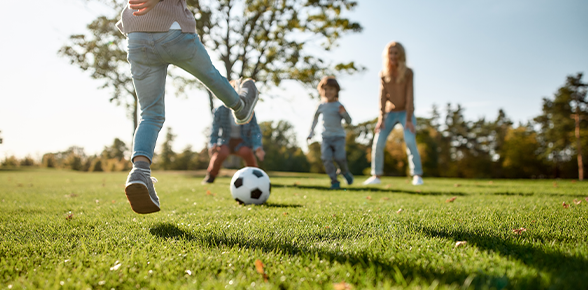Learning how to potty train your little one is a process of discovery for parents and carers, just as perching on the potty is a brand-new skill for your child. Toilet training marks the beginning of a journey towards independence and cleanliness, so it’s an exciting stage for all involved.
There’s no perfect age for potty training – some toddlers use the potty at 18 months old, while others are three years old before they master it. Behaviour may be a better signal than age.
Assuming your child is ready, it’s time to explore potty training methods – but even then, children vary a lot. If you’re trying to potty train a stubborn three-year-old or get a four-year-old to poo in the potty, then a more careful technique may be required, no matter how well-practiced you are.
Once you’ve decided it’s time, commitment is key. Set aside a few days and prepare to shower your tot with praise.
This article explores the fundamentals, including:
- How long it takes to potty train
- Use out potty training chart to get started
- Night time potty training
How long does it take to potty train?
There’s no right answer to this – it varies depending on both the type of parents and personality of the child. Here are some tips on getting the job done in set time periods.
Potty training in a day
Potty train a child in one day is not for everyone - not all children can pick up the skill this quickly. Learning the basics may take weeks, and can take some tots between three and six months to stay reliably dry.
Still, it’s fine to have a go. So long as the experience stays positive, a one-day potty training session could lay important foundations.
To potty train your child in one day, follow these steps:
1. Place the potty in your home at least a week beforehand. Your curious youngster needs to get used to it
2. Explain what the potty is used for and let your toddler see you use the toilet. Tell them what you’re doing. Children learn by seeing and imitating - and they will be less embarrassed.
3. Speak to your child about what they’ll be learning. Say bye-bye to their last daytime nappy in the morning.
4. Dress for less. Use big girl/boy pants from day one. It’s okay for them to run around in their pants, but it’s important that they get used to wearing them.
5. Set up play activities close to the potty, on a mess-friendly floor.
6. After a big drink, sit your toddler on the potty while they are watching something fun. This helps toddlers to stay relaxed and rewards them for perching on the pot.
7. Once they do a wee on the potty give huge praise. It’s a big achievement, after all.
8. Set a timer for every 20 minutes, then sit your toddler back on the potty and go again.
9. After a few hours, begin asking your child if they need to go. Keep at it, as it’s easy for busy boys and girls to forget
Potty training in three days
One day might be enough for some child to understand the potty and begin to tell you when they need to go. This is a great sign. Still, most children usually need three days or more to absorb the knowledge.
To potty train in three days, work through these stages:
Day 1– Stay close to the potty, introduce ‘in-flight entertainment’ while your little one is on the throne, and let them wear just their big girl/boy pants. Make sure they have plenty of fluids throughout the day - but don't over fill them just to get them to go. Prompt them to sit on the potty every 20-30 minutes while they are playing
Day 2 – Introduce underwear alongside the act of pulling these down before sitting on the potty. After they’ve been, help them use toilet tissue and wash their hands. Praise your tot with every success. When accidents happen, calmly explain that wees and poos go in the potty and let's try to do this next time
Day 3 – Move away from your timer. Still take your toddler to the potty every so often–especially after meals - but try to get your child to tell you when they need to go.
Potty training in a week
If you have the luxury of a little more time, potty training could be a more relaxed experience – trying to potty train a puzzled boy or girl a little too fast could lead to stress and confusion, which sometimes makes newbies less confident.
To avoid extra strain, you might potty train a little girl or boy across a week or more.
Try these steps as a guide:
Day 1– Explore the idea of potty training through play. Tell stories about your child’s toys rushing to the potty when they need a wee or poo.
Day 2– Lose the nappy and place your tot on the pot every 20-30 minutes. Try to keep it fun.
Day 3– Introduce underwear and ask about toileting urges. When accidents happen, explain, don’t shout.
Day 4– If things are going well, consider a walk to the park.
Day 5 – Talk about staying clean after using the toilet and introduce your toddler to how the ‘big potty’ works, such as the flush, in a reassuring way.
Using potty training charts
Young kids love to be rewarded. Maybe that’s why potty training charts have become so popular.
These brightly coloured aids help both parents and toddlers to map progress. A potty training reward chart is especially popular with parents of children who have lots of accidents.
To use a reward chart, set your child a goal. Do you want to get your four-year-old to poo in the potty every time, or are you trying to encourage a two-year-old to have more dry days? What’s right for your family will depend on your child.
Hang the chart where your child can see and use stickers or coloured pencils to mark-up successes. Consider pairing these with other rewards – perhaps five stickers earns a trip to the soft play centre. The idea is that this conditions children to associate the behaviour with positive experiences.
There are pros and cons to using reward charts. It’s worth knowing that while most kids respond well to them, some people think linking behaviours with rewards can reduce natural motivation to use the potty.
But that’s not to say charts can’t be used as part of a healthy potty-training routine. Try to balance stickers with praise and explain why potty training is so good.
Tips on starting potty training
Potty training is new territory for mum, dad and tots, so use these tips to navigate the ups and downs
Use games – These help to make the process fun and exciting for your toddler.
Don’t rush youngsters – Most tots will get there in time, and urgency rarely helps.
Sharing is caring – If your baby has brothers or sisters who are already trained, let them watch the potty process from an early age, since this can help children to learn.
Try potty training pants – These may ease your tot into controlling their body, but remember, use these to replace underwear, not nappies. Your child should still learn how to use the potty.
Keep it calm – If your child sits on the potty but doesn’t go, say well done for trying, then let them play and try again.
Night time potty training
Even after they’ve mastered potty training during the day, most children will need a nappy at night for a few months. This is completely normal.
Many children are not completely toilet trained at night until they are five years old.
Read our guide to bedwetting in children to learn more about night-time accidents.
Eventually, your child might naturally stay dry through the night and may even ask to give up the nappy – after all, clean underwear feels very grown-up.
Amanda adds: “Watch out for dry nappies in the morning for at least two weeks - this is a good indication they could be ready for night time training.""
At this stage, it’s time to take the leap into new potty-training methods for night-time learners. Make sure you’ve got:
- A waterproof mattress protector
- Spare duvet covers and sheets
- Two-piece pyjamas that are easy to pull down, or a nightie – no more onesies for your toileting tyke. And spares in case of accidents.
- Easy access to the toilet. Make sure your child’s path to the bathroom is well-lit and hazard-free or place the potty close by.
- Begin to take your child for a wee before bedtime, then let them choose underwear for the first try.





